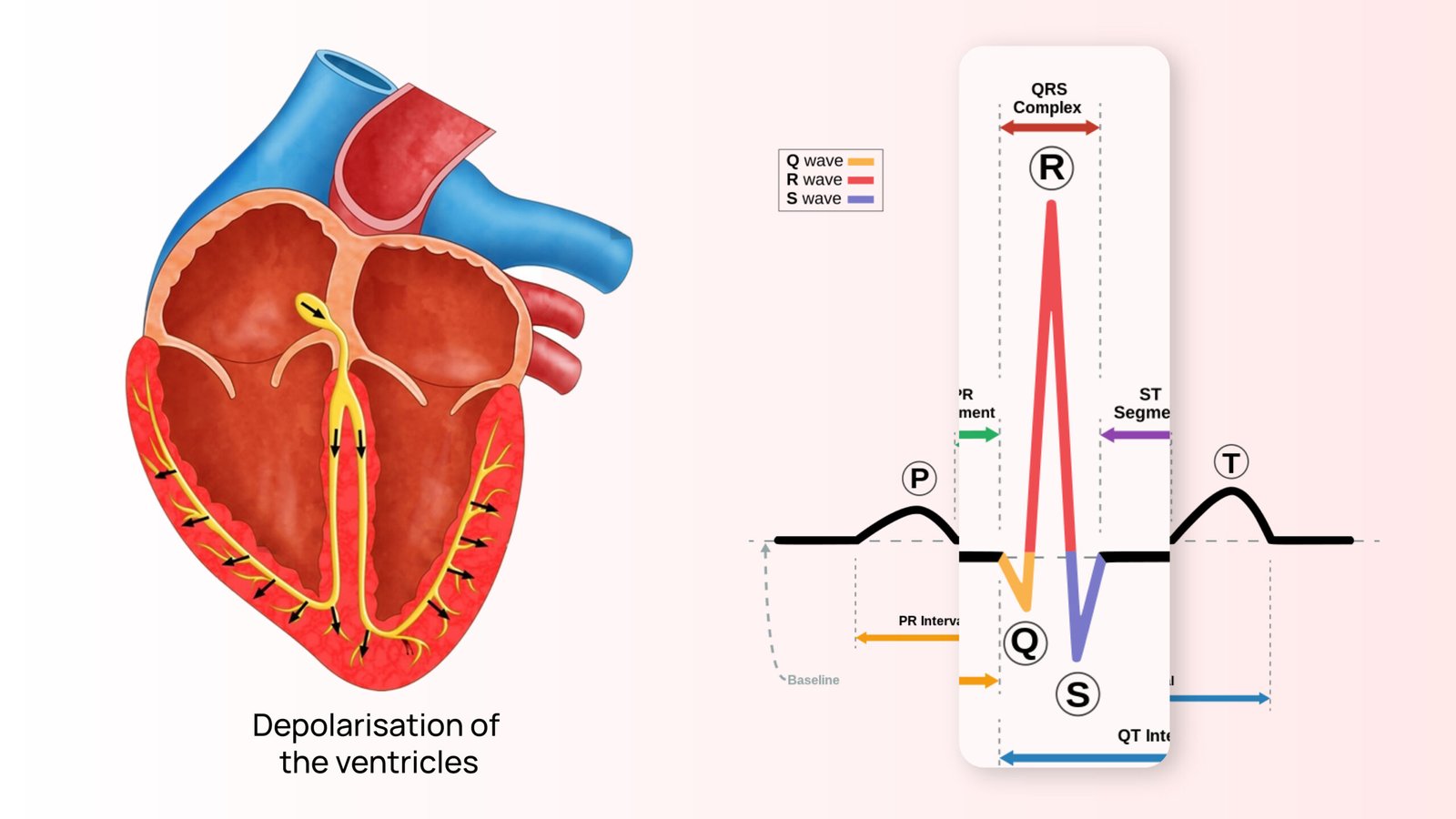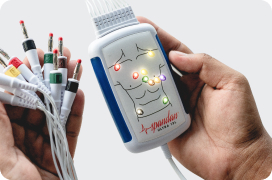
Author - Parth Sharma
Abnormal ECG Waves: QRS complex and its abnormalities
Heart diseases are the leading cause of death globally. ECG plays a crucial role in identifying abnormalities with the heart. The QRS complex can be identified by locating the spike in the ECG report. It represents the depolarization of the ventricles of the heart and marks the beginning of the contraction of the ventricles. In an abnormal ECG, the QRS complex can help us in reaching the correct diagnosis.
Further diagnostic tests and medical consultations are routinely advised to develop an effective treatment plan and enhance overall cardiovascular health. Early detection and intervention are imperative for the management of heart conditions, contributing to the promotion of a healthier lifestyle.
QRS complex in normal ECG and abnormal ECG
The QRS complex is made of Q, R and S waves that occur in rapid succession and in a normal ECG it is always preceded by a P-wave. In a normal ECG, the Q wave is always negative followed by a positive deflection which is the R wave. The S wave is the first negative deflection after the R wave. Normally, the duration of QRS complex is 0.08 to 0.10 seconds long which translates to 2-3 small boxes on the ECG. In a borderline ECG, the QRS wave could be in the range of 0.10 – 0.12 seconds. A QRS complex longer than 0.12 seconds or 3 small boxes is considered to be abnormal.
It is also important to measure the voltage of QRS complexes in an ECG. Normally, sum of S wave depth in V1 and tallest R wave height in V5-V6 should be less than 35 small boxes.
Reasons for abnormal QRS complex
In case of arrhythmias, a QRS complex can help in understanding the reason for the abnormal ECG report. A narrow complex points towards a supraventricular arrhythmia, where the pulse generates above the ventricles, whereas a broad QRS complex can be of ventricular origin or due to aberrant conduction. Some reasons for this include left or right bundle branch block, hyperkalemia, hypothermia, among other causes of ventricular tachycardia.
Increase in voltage of QRS complexes, i.e., if the sum mentioned above is more than 35 small boxes, it is called high left ventricular voltage. This can be a normal finding in thin people and in athletes. However, this could also be suggestive of long standing controlled hypertension.
What To Do If an ECG Report Shows Abnormal QRS?
If a person has symptoms of chest pain, palpitations, excessive sweating, giddiness, breathlessness or loss of consciousness and the ECG shows abnormal QRS complex, it is important to reach the nearest emergency care center for urgent life-saving treatment. If these symptoms are absent but the ECG shows abnormal QRS complexes then a doctor should be consulted at the earliest for further evaluation and treatment.
The abnormalities caused by the QRS complex in the ECG range from arrhythmias of different arrhythmia classifications, such as narrow complex tachycardia, wide complex tachycardia, etc., to many heart dysfunctions. Some of these abnormalities are mild and only require frequent heart health check-ups and lifestyle changes. However, some of these abnormalities are severe and require prompt medical intervention in the form of medication or surgery. To gauge the severity of your QRS complex abnormalities, you must visit a healthcare professional as soon as the symptoms of the disease are prevalent in your body. Keep in mind that to steer clear of heart abnormalities related to the QRS complex, a steadfast approach is required. Stay vigilant and take care of your heart health.




